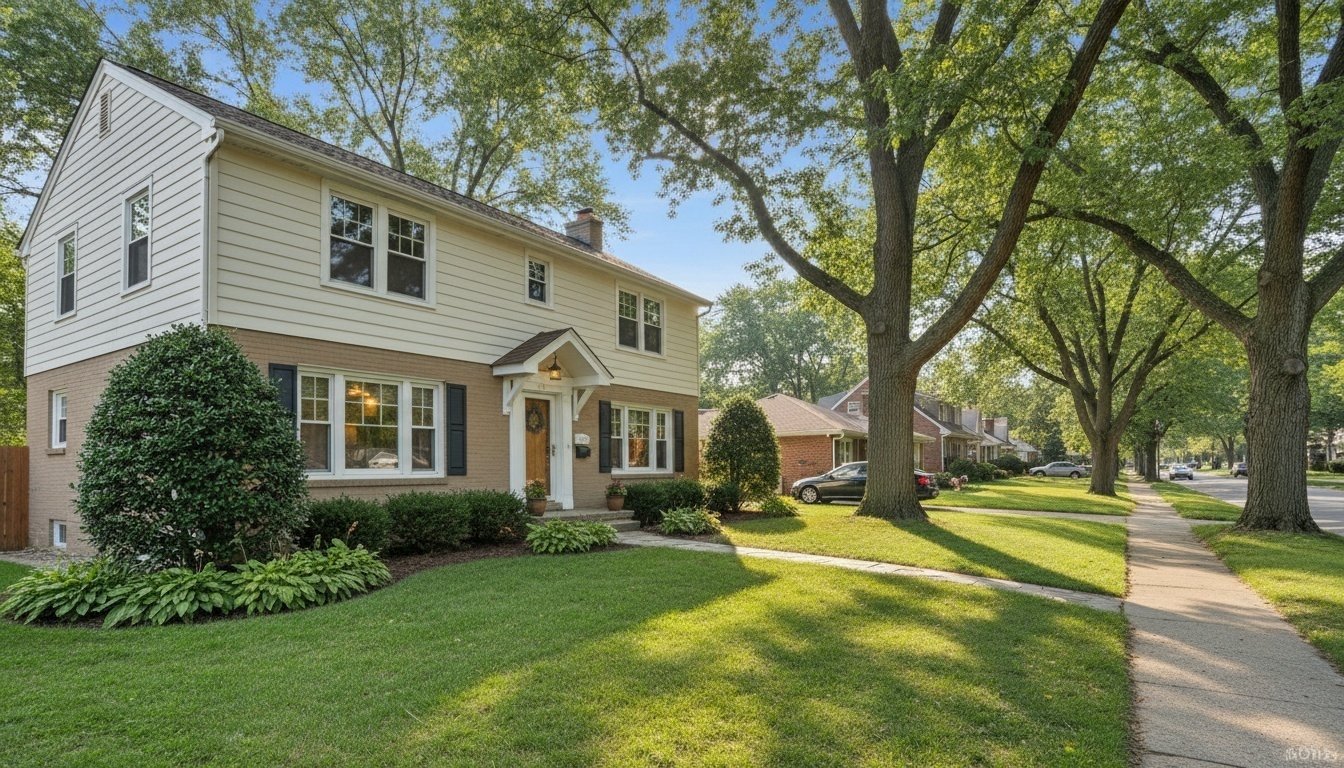New 2025 housing data reveals that in 47 of the top 50 U.S. metro areas, the typical household can no longer afford a median-priced home.
By any measure, 2025 has redrawn the map of housing affordability in America. With median home prices holding above $440,000 and mortgage rates still hovering near 7%, a new national benchmark has emerged: homeownership now demands a six-figure income in most of the country’s major metros.
According to a comprehensive analysis of 2025 data from Redfin and U.S. Census estimates, the median household income needed to buy a median-priced U.S. home is now approximately $112,000 - a figure that exceeds the actual median income by more than 30%.
The 30% Rule is No Longer Applies
For decades, the standard guidance was clear: spend no more than 30% of your gross income on housing. But in 2025, that benchmark is near impossible for most recent homeowners. A typical American household now spends over 44% of its income to cover the mortgage on a median-priced home, according to Redfin’s August 2025 housing affordability report.
The Affordability Divide in U.S. Housing
Out of the 50 largest U.S. metros, only Pittsburgh, St. Louis, and Detroit offer homes that a median-income household can afford under traditional lending standards. Pittsburgh, the most affordable, has a median home price of $252,000 and requires an income of just over $70,000—a rare alignment with local earnings.
But elsewhere, sticker shock is the norm. Consider this:
-
Los Angeles: Median home price $1.15M → $271K income needed (3× the median income)
-
San Jose: $1.37M price tag → $323K income required (more than double the city’s $157K median income)
-
Miami: $510K median home → $126K income needed (70% higher than local median)
-
Phoenix: $505K → $121K income needed
-
Dallas: $440K → $119K income needed
Even in mid-market cities like Atlanta, Houston, and Orlando, six-figure incomes are now required.
Income Required to Buy a Median-Priced Home in 50 Major U.S. Cities
Below are all 50 cities in the study, ranked by estimated household income needed to afford a median-priced home in 2025 (assuming a 30-year mortgage, 7% rate, 20% down, and housing costs capped at 30% of income):
-
San Jose, CA: $323,153
-
Los Angeles, CA: $271,573
-
San Francisco, CA: $235,284
-
San Diego, CA: $234,712
-
Boston, MA: $211,288
-
New York, NY: $195,951
-
Seattle, WA: $191,093
-
Providence, RI: $155,460
-
Sacramento, CA: $151,709
-
Washington, DC: $148,570
-
Portland, OR: $148,475
-
Riverside, CA: $145,961
-
Denver, CO: $143,258
-
Austin, TX: $137,160
-
Nashville, TN: $130,722
-
Miami, FL: $126,153
-
Hartford, CT: $123,866
-
Phoenix, AZ: $120,713
-
Dallas, TX: $119,283
-
Las Vegas, NV: $115,249
-
Grand Rapids, MI: $113,588
-
Richmond, VA: $113,525
-
Minneapolis, MN: $113,332
-
Raleigh, NC: $113,092
-
Milwaukee, WI: $110,692
-
Charlotte, NC: $110,691
-
Chicago, IL: $109,924
-
Columbus, OH: $107,107
-
Orlando, FL: $107,020
-
Atlanta, GA: $105,914
-
Virginia Beach, VA: $105,385
-
Tampa, FL: $104,265
-
Baltimore, MD: $103,682
-
Philadelphia, PA: $103,358
-
Kansas City, MO: $103,257
-
Jacksonville, FL: $102,766
-
Houston, TX: $101,696
-
Cincinnati, OH: $96,439
-
Tucson, AZ: $94,072
-
San Antonio, TX: $94,072
-
Indianapolis, IN: $86,416
-
Memphis, TN: $84,782
-
Oklahoma City, OK: $84,396
-
Louisville, KY: $83,330
-
Buffalo, NY: $80,990
-
St. Louis, MO: $79,602
-
Detroit, MI: $77,388
-
Birmingham, AL: $76,551
-
Cleveland, OH: $76,077
-
Pittsburgh, PA: $70,700
Only three cities - Pittsburgh, St. Louis, and Detroit - fall at or below their respective local median incomes, making them relatively affordable.
Helping Clients Navigate Today's Market
For real estate professionals, these numbers are conversation starters. Guiding buyers through the affordability landscape means grounding expectations, finding creative financing paths, and possibly expanding location searches.
As affordability gaps widen across cities, real estate professionals should focus on identifying attainable markets for buyers, advising sellers on evolving demand dynamics, and staying current on mortgage trends and assistance programs.
In 2025, purchasing a home requires careful financial planning and clear guidance. Agents who understand the data and local context are better positioned to help clients navigate this challenging landscape.

